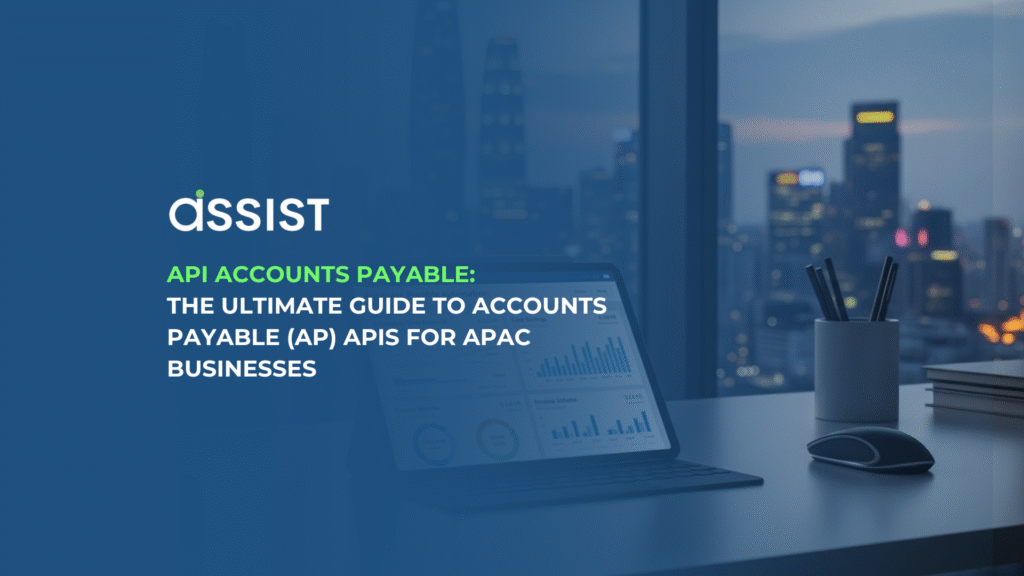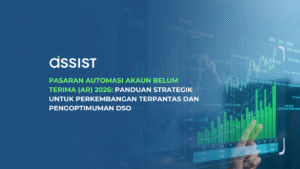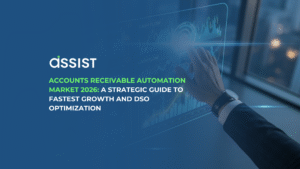An Accounts Payable (AP) API is a powerful tool that allows your accounting software to automatically and securely communicate with other systems, like those of your suppliers and banks. It acts as a bridge, enabling seamless data exchange to automate invoice processing, validation, payment, and reconciliation, ultimately saving time, reducing errors, and providing real-time financial visibility. Let’s explore how this technology is reshaping finance for businesses across the APAC region.
The Ticking Clock of Manual AP in the APAC Region
In the bustling economic landscape of the Asia-Pacific (APAC) region, speed is everything. Businesses are scaling faster than ever, but for many finance teams, a familiar bottleneck persists: the accounts payable process. Stacks of paper invoices, endless manual data entry, and drawn-out approval chains aren’t just inefficient; they’re a significant drag on growth. Late payment penalties, strained supplier relationships, and a lack of real-time financial visibility are the all-too-common symptoms. While many are familiar with bookkeeping 101 and its importance in business, the manual methods of the past are simply no match for the demands of the present. The good news? There’s a powerful solution designed for the digital age: the Accounts Payable (AP) API. It’s the engine that powers modern, automated finance operations.
What Exactly is an Accounts Payable API? (And What Isn’t It?)
Let’s demystify the jargon. An Application Programming Interface (API) is essentially a set of rules and protocols that allows different software applications to communicate with each other. Think of it as a universal translator. Your accounting software (like Xero or QuickBooks) holds your financial data, your supplier’s portal has their invoice information, and your bank handles the payments. An AP API is the bridge that allows these separate systems to talk to each other seamlessly, exchanging information automatically without any manual intervention.
It’s not another piece of standalone software you need to learn. Instead, it’s the invisible, behind-the-scenes connection that makes your existing tools more powerful. It’s a core component of how modern automated bookkeeping software helps businesses eliminate tedious tasks and focus on strategic growth. By connecting your systems, an AP API transforms your accounts payable from a disjointed, manual process into a streamlined, automated workflow.
The Undeniable Benefits: How an API Transforms Your AP Workflow
Integrating an API into your accounts payable process isn’t just an incremental improvement; it’s a transformation. Here’s how it fundamentally changes the way you manage payables:
- Drastic Time Savings: Manual invoice processing is a notorious time sink. An API automates everything from data extraction using OCR to invoice validation, freeing up your finance team for more strategic activities. According to a Goldman Sachs report, AP automation can reduce invoice processing costs by over 80%. This is the essence of how AI will impact accounting, turning your team into strategic advisors rather than data entry clerks.
- Enhanced Accuracy: To err is human, but in accounting, errors are costly. Manual data entry has an error rate as high as 3.6%, leading to incorrect payments and compliance headaches. An API eliminates this by pulling data directly from the source, ensuring unparalleled accuracy and integrity in your financial records.
- Real-time Financial Visibility: How much do you owe, and when is it due? In a manual system, answering this can require hours of work. An API provides an up-to-the-minute view of your liabilities, allowing for better cash flow management and more informed financial forecasting.
- Improved Supplier Relationships: Paying suppliers on time, every time, builds trust and goodwill. An automated system ensures that invoices are processed and approved efficiently, strengthening your relationships with key partners and often allowing you to take advantage of early payment discounts. These are just some of the top 5 reasons to use automated bookkeeping.
How an AP API Works in Practice: A Step-by-Step Visual Guide
The real beauty of an API is its elegant simplicity in action. While it’s technologically sophisticated, the workflow it creates is logical and easy to understand. Here’s a typical journey of an invoice in an API-driven system:
A visual representation of how an AP API connects different systems to create a seamless workflow.
- Invoice Arrival & Data Capture: An invoice arrives via email. The system automatically captures it and uses Optical Character Recognition (OCR) to extract key data like the vendor name, invoice number, amount, and due date.
- API Call for Validation: The API instantly sends this data to your ERP or accounting software to validate it against a purchase order or vendor record.
- Approval Workflow Triggered: Once validated, the invoice is automatically routed to the correct person for approval based on pre-set rules.
- Payment Instruction Sent via API: Upon final approval, the API sends a secure payment instruction to your bank or payment gateway.
- Reconciliation Data Pushed Back: After the payment is made, the API pushes the confirmation back into your accounting software, marking the invoice as paid and completing the reconciliation.
Key Features to Look For When Choosing an AP API Solution
As you explore AP automation, it’s vital to choose a solution that fits the unique needs of your business. To help you navigate the options, we’ve evaluated key features based on criteria crucial for APAC businesses: ease of integration, compliance with local regulations (like the push for e-invoicing in Malaysia), and scalability.
Here’s a breakdown of what to look for:
| Feature | What to Look For | Why It Matters for APAC |
| Seamless ERP/Accounting Integration | Pre-built connectors for popular software. Look for robust integration with platforms like Xero and QuickBooks. | Ensures a smooth, plug-and-play setup without costly custom development, allowing you to leverage your existing systems. |
| Intelligent OCR Capabilities | High-accuracy data extraction that learns and improves over time. | The diversity of invoice formats across the APAC region requires a smart, adaptable data capture solution, not a rigid template. |
| Multi-entity & Multi-currency Support | The ability to manage payables across different business units and currencies from a single platform. | Essential for any business operating or sourcing from multiple countries in the diverse APAC market. |
| Robust Security & Compliance | Look for international security certifications and a commitment to data privacy. | With varying data sovereignty laws, a secure and compliant platform is non-negotiable for protecting sensitive financial information. |
An AP API in Action: A Customer Success Story
Theory is great, but results speak for themselves. Meet “APAC Logistics,” a mid-sized logistics firm in Singapore. They were drowning in a sea of paper invoices from hundreds of vendors across the region. Their small finance team spent over 70% of their time on manual data entry and chasing approvals, leading to frequent late payments and a constant struggle to close the books.
By implementing an AP automation solution powered by an API, they connected their email, accounting software, and banking system. The results were transformative. They reduced their invoice processing time from 15 days to just 2, eliminated late payment fees entirely, and freed up their finance team to focus on analyzing shipping lane profitability. You can explore more detailed stories like this on our case study page.
Implementation: Challenges and Best Practices
Adopting any new technology comes with considerations. While a modern AP API is designed for ease of use, potential challenges can include mapping custom data fields or managing the change process with your team.
Here are two best practices for a smooth transition:
- Start with a Trial: Choose a provider that lets you sign up for a free trial. This allows you to test the software with your own invoices and see the value firsthand before committing.
- Prioritize Vendor Support: Select a partner with strong local support and a comprehensive library of resources, like a detailed FAQ page, to guide you through any questions.
Conclusion: Future-Proof Your Finances with Assist
In the competitive APAC market, efficiency is the key to sustainable growth. An Accounts Payable API is no longer a luxury for large enterprises; it is a foundational technology for any business serious about scaling its finance operations, reducing costs, and gaining a real-time understanding of its financial health. It’s about transforming your accounts payable from a cost center into a strategic asset.
Ready to eliminate manual data entry and gain real-time control over your accounts payable? See how Assist leverages the power of API automation. Register for your free trial today and experience the future of bookkeeping.




